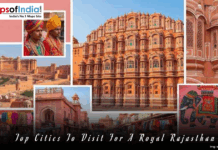Majuli Island, located in northeastern India, is a beautiful island that floats on the great Brahmaputra River. Majuli, which has a total area of 452 square kilometers, is frequently hailed as the world’s largest river island. Majuli is remarkable for more reasons than only its size; it is also notable for the rich tapestry of culture, nature, and spirituality that forms its foundation.
A Geographic Wonder
Majuli Island is in the Indian state of Assam, in the country’s northeastern region. The island is formed by the Brahmaputra River and its many tributaries, which flow through the Indian subcontinent. While it is commonly called an island, its geographical history is more complicated. The river’s channel constantly changes, forming new landmasses and eroding others, and Majuli has changed dramatically. It was formerly much more significant, but erosion has resulted in a progressive diminution in size. This natural-force-driven process is a perpetual threat to the island’s survival.
Despite this, Majuli’s distinct geography continues to draw visitors from all over the world. Its breathtaking scenery, pure seas, and vivid flora and animals make it a nature lover’s heaven. The island’s rich flora and tranquil beauty have earned it the title of “Assam’s Cultural and Environmental Capital.”
Culture and History
The island is Assam’s cultural hub and the birthplace of neo-Vaishnavism, a sect of Hinduism based on the teachings of the medieval saint and scholar Srimanta Sankardev. Sankardev’s impact on the island is enormous since he founded many monasteries and satras dedicated to Lord Krishna’s devotion and the spread of his teachings. These satras have not only preserved religious and cultural traditions but have also played an essential part in the socio-economic growth of the island.
The Kamalabari Satra, back in the 16th century, is one of Majuli’s most well-known satras. It is a traditional arts center for music, dance, and theatre. The Satra is famous for its vibrant festivals and religious events, drawing pilgrims and tourists. Majuli is known for its indigenous Assamese art forms, such as the lovely Sattriya dance. This traditional dance form developed in the Majuli satras and is classified as one of India’s eight classical dances. Sattriya dance is distinguished by its graceful movements, gorgeous costumes, and themes based on Lord Krishna’s life.
A Biodiversity Reserve
Majuli is a biodiversity hotspot in addition to its cultural riches. The island has a diversified ecosystem with different plant and animal species. Majuli’s lush soil supports a wide range of crops, and the fields are a patchwork of green and gold, adding to the island’s allure. The riverbanks and marshes are home to various bird species, making it a bird-watcher’s dream.
The Gangetic River dolphin, an endangered species, is one of the island’s most famous residents. These dolphins are frequently sighted playing in the waters around Majuli, making the island a unique destination for nature lovers. The Majuli Island Bird Festival, held each year, highlights avian diversity and allows visitors to experience the island’s natural beauty.




